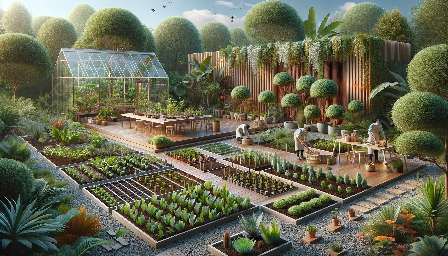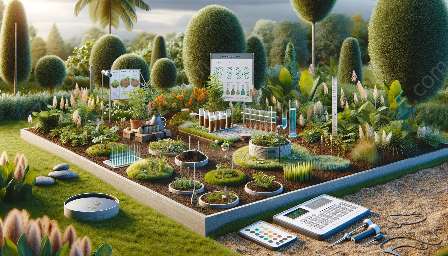Agroforestry is an innovative and sustainable land use system that combines agriculture, forestry, and horticulture to create a more diverse, productive, and sustainable ecosystem.
By integrating trees and shrubs with crops and livestock, agroforestry offers numerous environmental and economic benefits that contribute to the overall sustainability of the agricultural landscape.
The Importance of Agroforestry
Agroforestry has gained attention as a promising approach to sustainable land use and natural resource management. It offers solutions to various environmental and agricultural challenges, including soil erosion, biodiversity loss, and climate change mitigation, while also enhancing the overall productivity and resilience of agricultural systems.
Environmental Benefits
One of the key advantages of agroforestry is the positive impact it has on the environment. The strategic integration of trees and shrubs in agricultural landscapes helps to reduce soil erosion, enhance soil fertility, improve water quality, and provide habitat for wildlife, thereby promoting biodiversity conservation.
The presence of trees in agroforestry systems contributes to carbon sequestration, helping to mitigate climate change by capturing and storing atmospheric carbon dioxide. This makes agroforestry an important tool in the fight against global warming and its associated impacts.
Economic Advantages
From an economic perspective, agroforestry has the potential to increase farm income by diversifying production and providing alternative revenue streams. Trees and woody perennial plants cultivated in agroforestry systems can generate additional sources of income through products such as fruits, nuts, timber, and medicinal plants.
Furthermore, agroforestry can reduce production costs by improving soil health, controlling pests, and conserving water. The long-term benefits of agroforestry are particularly valuable for smallholder farmers, as it can help to enhance food security and provide a stable income throughout the year.
Types of Agroforestry Systems
Agroforestry encompasses a wide range of systems and practices that integrate trees, crops, and livestock in diverse ways. Some common types of agroforestry systems include:
- 1. Alley Cropping: Involves planting rows of trees or shrubs with arable crops grown in the alleys between the tree rows. This system provides shade, reduces wind and water erosion, and enhances soil fertility.
- 2. Silvopasture: Combines trees or woody shrubs with forage and livestock production. It provides shade for animals, improves forage quality, and increases overall productivity.
- 3. Windbreaks: Planting trees or shrubs in lines to protect crops, livestock, and soil from wind damage. Windbreaks can reduce wind erosion, improve microclimates, and enhance biodiversity.
- 4. Forest Gardening: Mimics the structure and functions of a natural forest to create a productive and diverse garden. It includes a mix of fruit and nut trees, shrubs, herbs, and vegetables.
Agroforestry and Horticulture
Agroforestry and horticulture share common principles and practices related to the integrated management and cultivation of trees, plants, and crops. Both disciplines focus on sustainable land use, biodiversity conservation, and the production of valuable agricultural products.
By incorporating agroforestry practices into horticultural systems, such as orchards and gardens, it is possible to enhance overall productivity and resilience. Agroforestry can provide additional benefits, such as improved pest management, enhanced soil fertility, and increased biodiversity, which are crucial for the long-term sustainability of horticultural enterprises.
Furthermore, the strategic combination of trees, shrubs, and perennial plants in horticultural settings can create diverse and multifunctional ecosystems that support a wide range of beneficial organisms, such as pollinators and natural enemies of pests, contributing to the overall health and productivity of the horticultural landscape.
Agroforestry and Agriculture
Agroforestry offers valuable opportunities for enhancing agricultural production and sustainability. By integrating trees and shrubs with traditional crops and livestock, agroforestry systems can improve soil health, conserve water, reduce erosion, and enhance overall biodiversity.
From an agricultural perspective, agroforestry complements conventional farming practices by providing ecological services, diversifying production, and increasing resilience to climate variability. In addition, agroforestry can contribute to the establishment of agroecological principles within agricultural systems, promoting sustainable and environmentally friendly approaches to food production.
The Future of Agroforestry
As global challenges such as climate change, soil degradation, and biodiversity loss continue to impact agricultural landscapes, the adoption of agroforestry becomes increasingly important. The integration of agroforestry practices in agricultural and horticultural systems can lead to more sustainable and resilient food production, while also addressing environmental concerns and supporting rural livelihoods.
Education, research, and policy support are essential for promoting the widespread adoption of agroforestry and realizing its full potential in enhancing the sustainability of agriculture and horticulture. By collaborating with farmers, landowners, researchers, and policymakers, we can work towards cultivating a landscape that thrives with the diverse benefits agroforestry offers.



